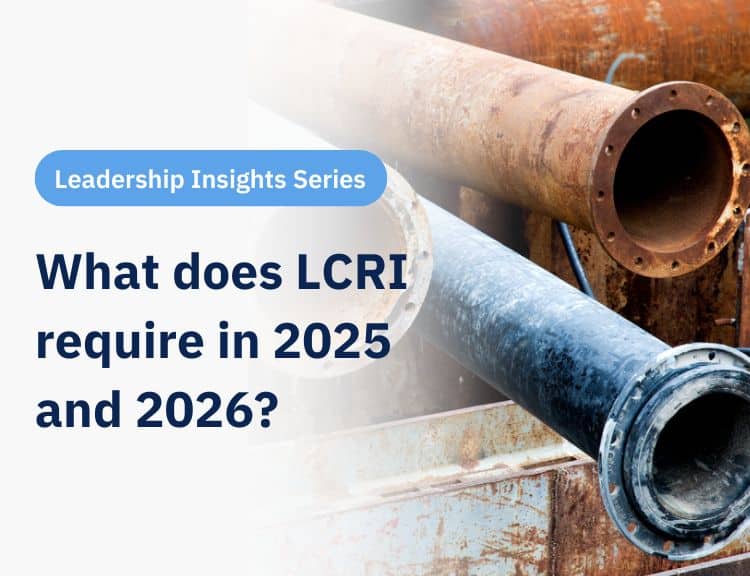Not sure if you’ve got lead or GRR?: How to navigate predictive modeling and statistical method compliance for service line material identification
We talk a lot about ‘compliance’ but the reality is that compliance is complicated and changes over time. This series breaks down compliance requirements across the LCR and the proposed LCRI to help you understand the who, what, and when of compliance.
The October 2024 Service Line Inventory deadline is now 2 months away. In the previous post, we explored the definition and nuances of galvanized-requiring-replacement (GRR) service lines.
But what about water systems that don’t know if they have GRR or lead service lines, or that have just a few GRR or lead service lines? Having an unclear picture of the materials makeup of your water system adds complexity when navigating the use of predictive modeling and statistical methods for the Service Line Inventory.
Why the added complexity?
Many states, from California to Florida to North Carolina, outline separate guidance for the use of statistical methods in 2 categories: 1) water systems with lead and/or GRR and 2) water systems with no lead or GRR.
But the reality is that there are many water systems that simply don’t know which category they will fall in. After all, there are over 21 MILLION unknowns nationwide, according to recently released EPA data. And more than 75% of medium and large water systems currently have service lines of unknown or unreported material; we expect most of these systems will continue to have outstanding unknowns after October 16, 2024.
Why do lead and non-lead systems have separate compliance requirements for using statistical methods?
Because these water systems are trying to accomplish 2 different goals.

For water systems that aren’t confident about their actual system makeup (or that are confident, but don’t have the records to support their classifications), it can be difficult to decide how to proceed because it is unclear which category of guidance they need to follow, what resources are needed to complete the project, and what expertise exactly is required for high quality statistical methods (that will be approved by the state primacy agency).
Why does this matter now?
Unknown management is timely and urgent, both now and after October 16. While inventories can be submitted with outstanding Unknowns, all customers with unknown, lead, and GRR service lines will receive a notification in 2024 of their service line material status. Additionally, the upcoming Lead and Copper Rule Improvements (LCRI) will require all the identification of all service lines with unknown materials, at an expected pace of 10% per year for 10 years (2027-2037).
Don’t let the 10-year timeline fool you; waiting to make a plan for unknown management can come with significant time, cost, and community trust consequences. You can explore these costs in more detail here.
Path forward for GRR only and low lead water systems
The best practice for the use of predictive modeling and statistical methods, whether or not a system has lead, is to begin with data analysis and a random, representative sample of physically verified service lines.
To learn more about best practices for data management for service line inventories, check out our whitepaper.
The service line materials identified in this representative sample, combined with data from all additional, verified service lines, clarify the path forward:

No matter your system materials makeup, BlueConduit can help. Our LSL Predictions solution, supported by an expert team of data scientists and policy experts, supports all of these paths (even if you aren’t sure which path you are on at the start). We manage the data analysis and representative sampling process for you and then, based on the results, provide the highest quality, compliant statistical analysis and material classification results available. All of this is delivered in simple, easy-to-use tools integrated directly into your Esri platform.
Ready to eliminate the uncertainty in your inventory? Reach out to schedule a conversation today.
Interested in how we apply our best-in-class predictive modeling solutions to water mains risk of failure? Sign up for our new monthly Water Mains newsletter today.






